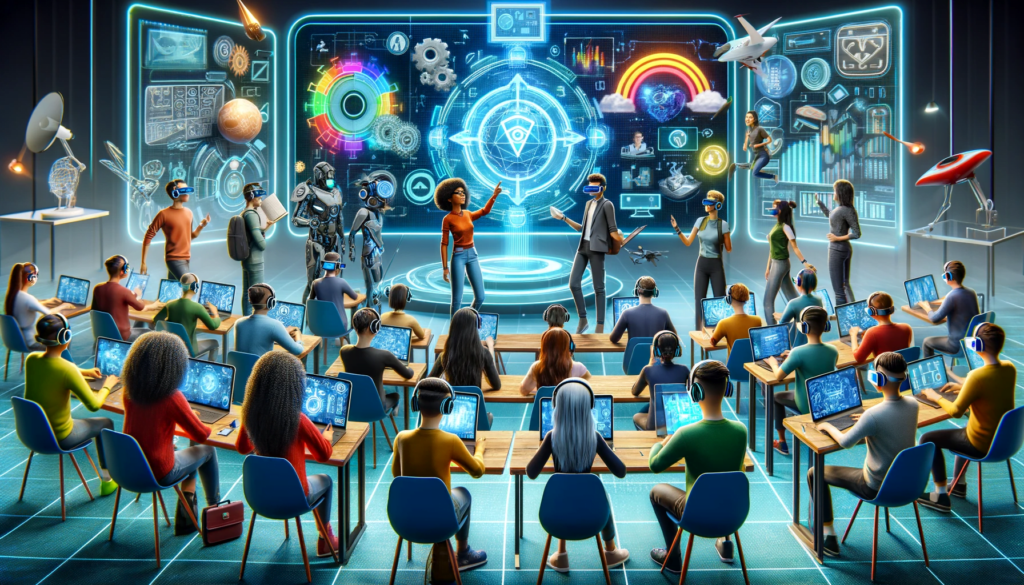The field of Distance Education (EAD) is constantly evolving, and 2023 is no exception.
This year, we are witnessing a series of innovations in distance learning that are not only transforming the way we learn online, but also redefining the possibilities of digital education.
Let’s dive into the ten most impactful innovations that are shaping the future of distance learning.
Index

1. Personalized Artificial Intelligence
The application of Artificial intelligence (AI) in distance learning is enabling unprecedented personalization of learning.
Intelligent systems can now adapt course materials in real time, meeting the individual needs of each student.
2. Immersive Virtual Reality
Virtual Reality (VR) is creating immersive environments that simulate classroom experiences. This innovation in distance learning is transforming learning into a more engaging and interactive experience.
3. Remote Labs and Simulations
Simulation technology is enabling students in practical fields such as medicine and engineering to conduct experiments and practices in a safe virtual environment.
4. Gamification of Learning
Integrating game elements into distance learning courses is increasing student engagement and motivation. These innovations in distance learning make learning a more engaging and fun experience.
5. Mobile Learning and Educational Apps
The growth of educational mobile apps is making it easier to access learning anytime, anywhere, highlighting flexibility as one of the biggest innovations in distance learning.
6. Big Data and Learning Analytics
The use of Big Data is enabling deeper analysis of student progress, helping educators to further personalize instruction and improve learning outcomes.
7. Online Collaboration Platforms
Collaboration platforms are reshaping student-teacher and student-student interactions, making distance learning a more communal and interactive experience.
8. Hybrid and Flexible Courses
The hybrid learning model, which combines online and face-to-face elements, is becoming more popular, offering students a balance between flexibility and direct interaction.
9. Speech Recognition and Virtual Assistance
Speech recognition technology and virtual assistants are making learning more accessible and adaptable, especially for students with special needs.
10. Digital Certifications and Microcredentials
The offer of microcredentials and digital certifications is reshaping the way skills are recognized in the job market, making distance learning even more relevant and pragmatic.
Conclusion
Innovations in distance learning in 2023 are redefining the limits of what is possible in the field of online education.
From advanced personalization to increased interactivity, these changes are not only improving the learning experience, but also preparing students for an increasingly digital future.
As we continue to explore and integrate these innovations, the future of distance learning looks brighter and more promising than ever.
